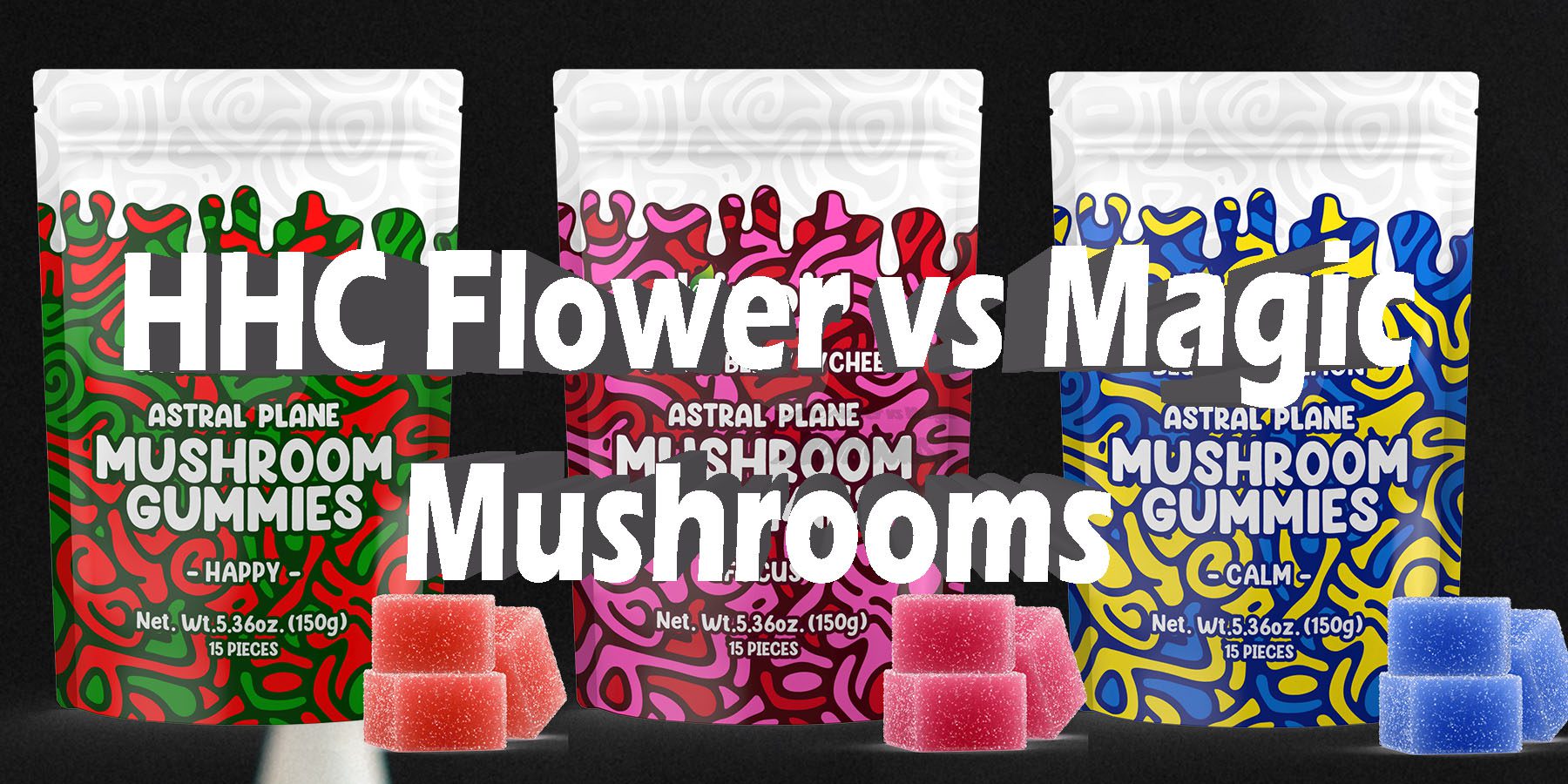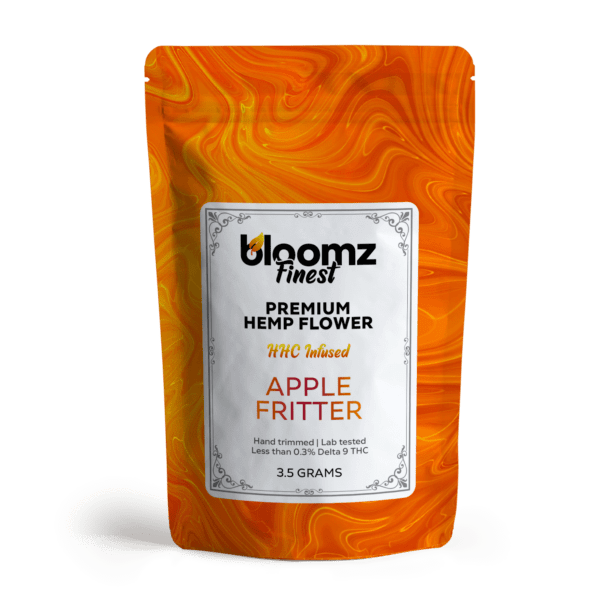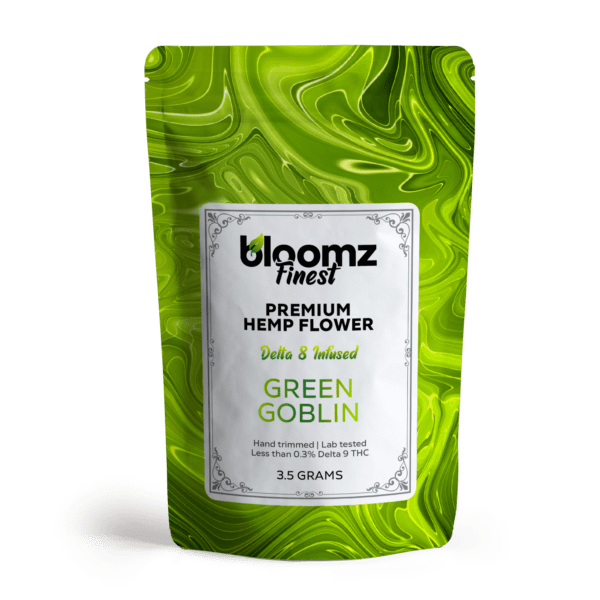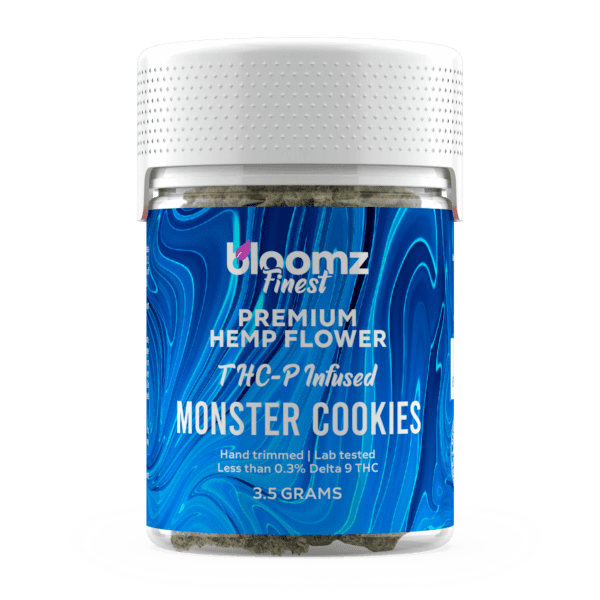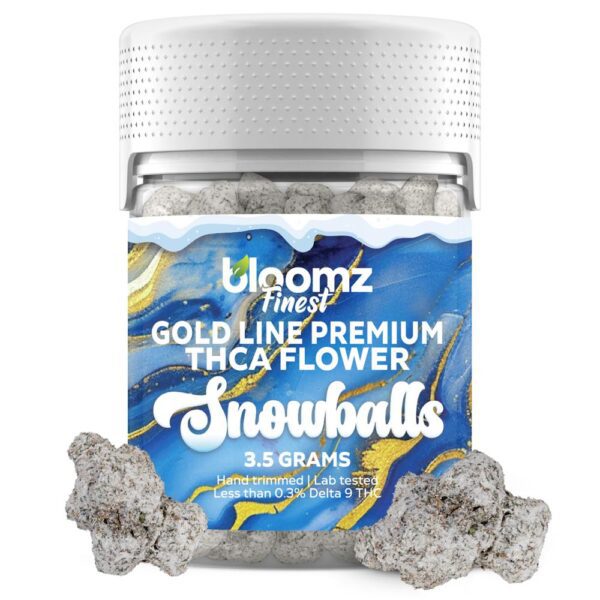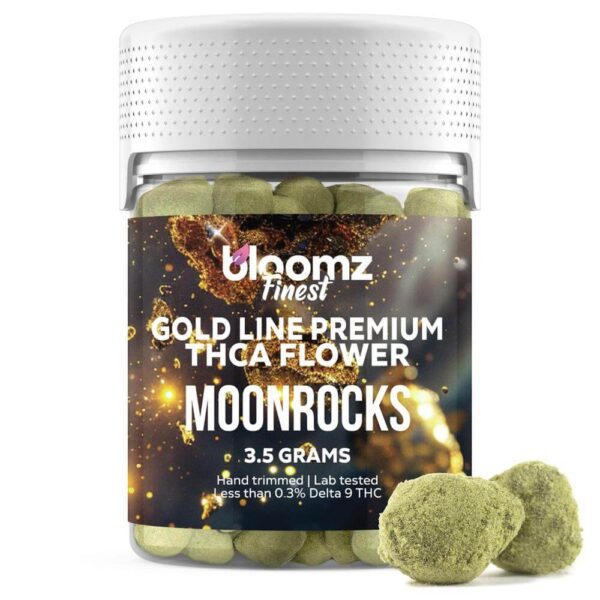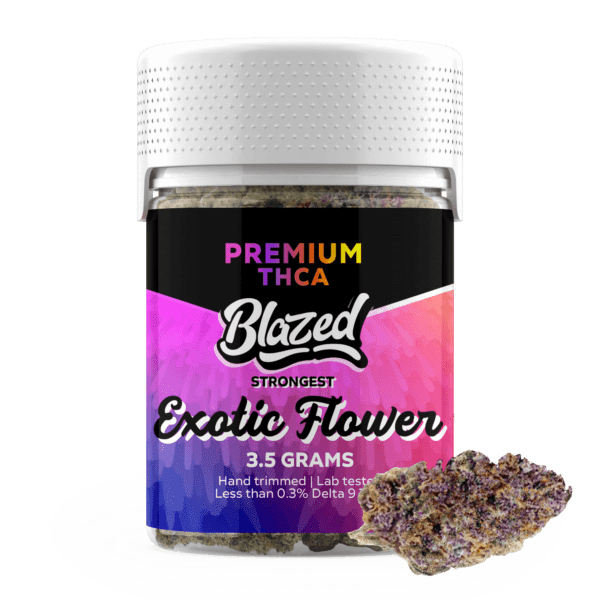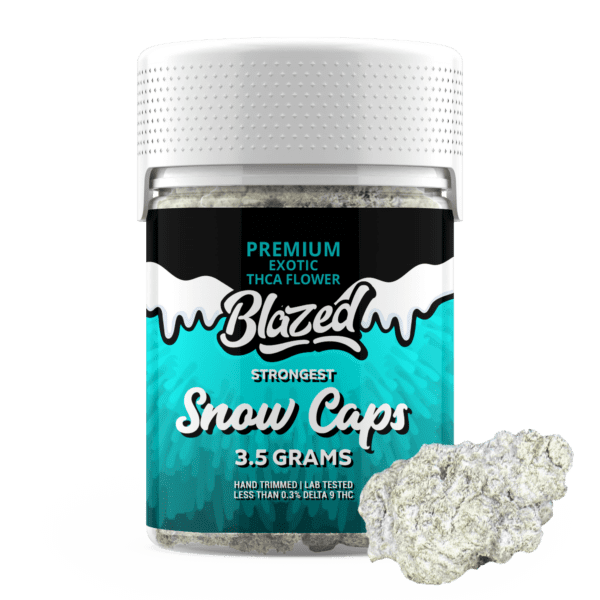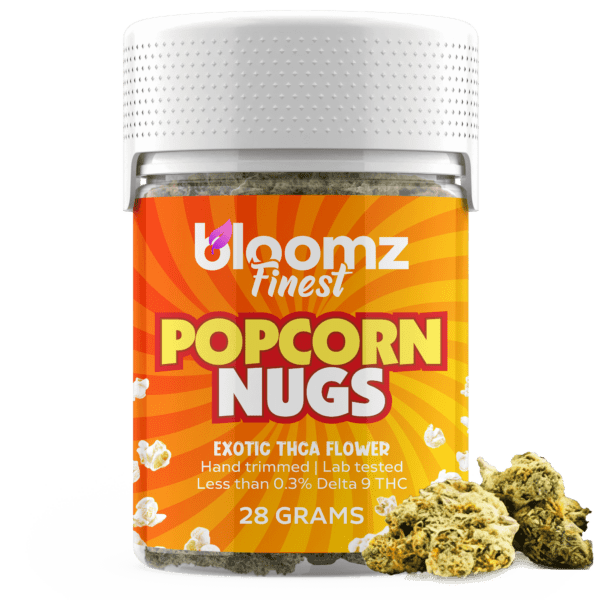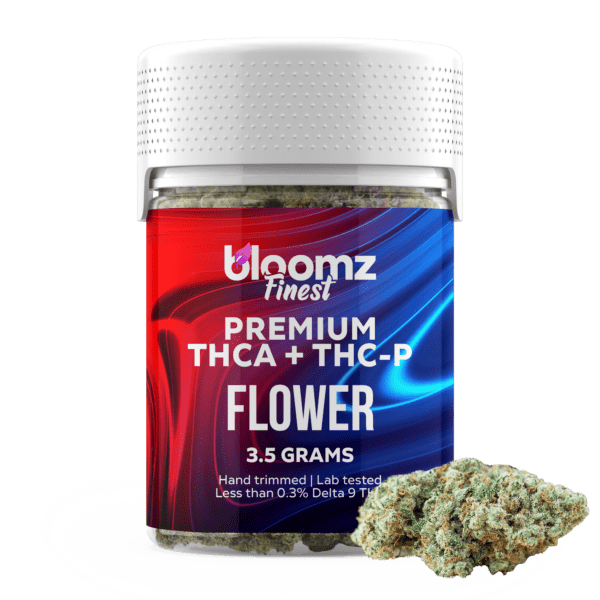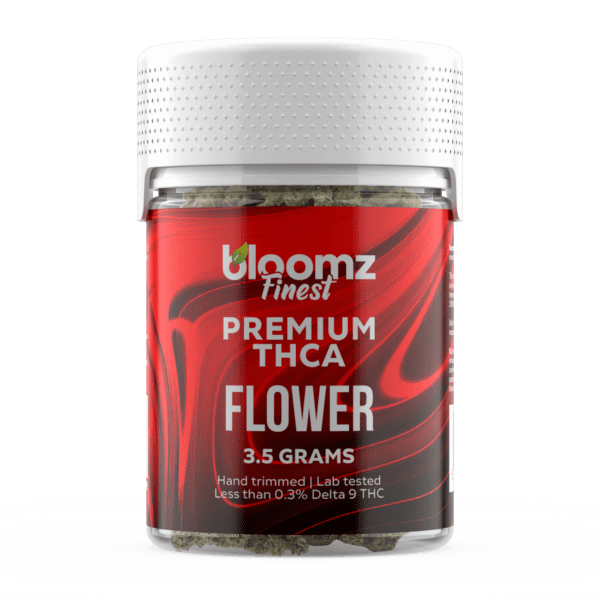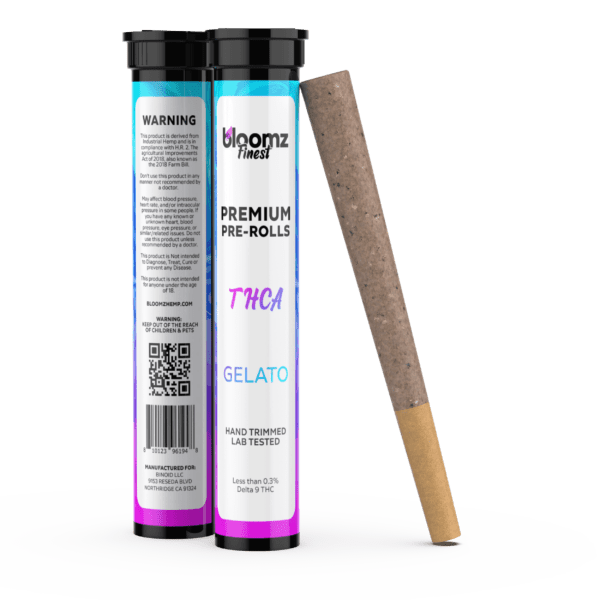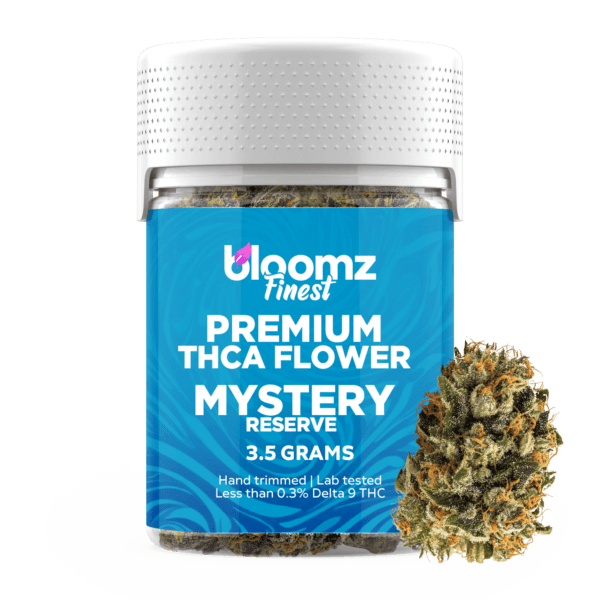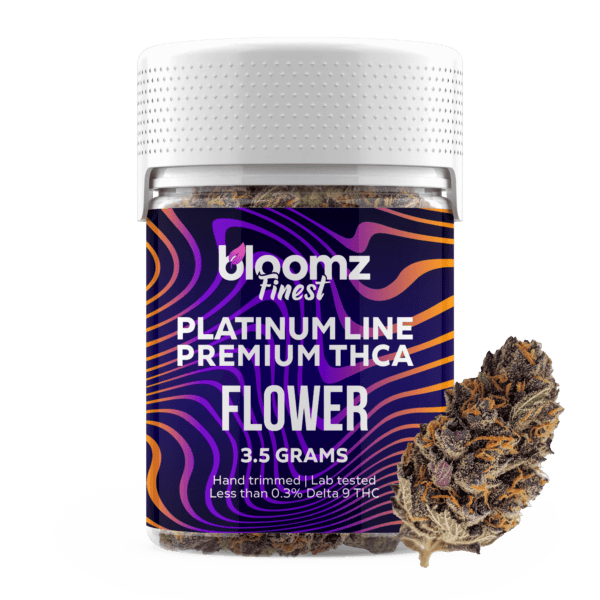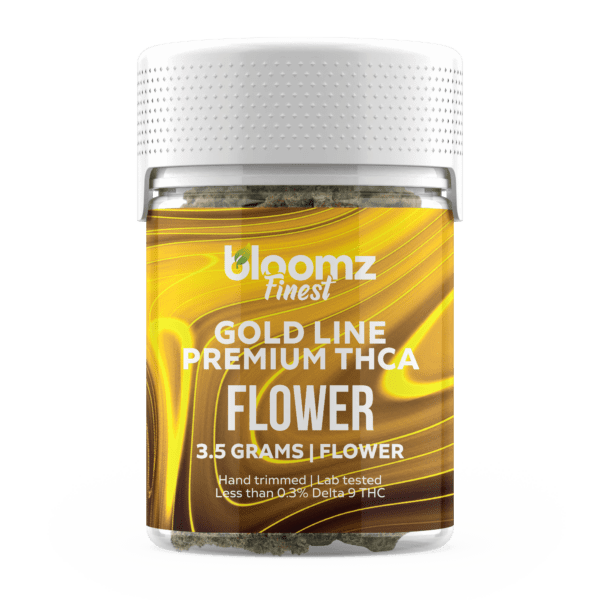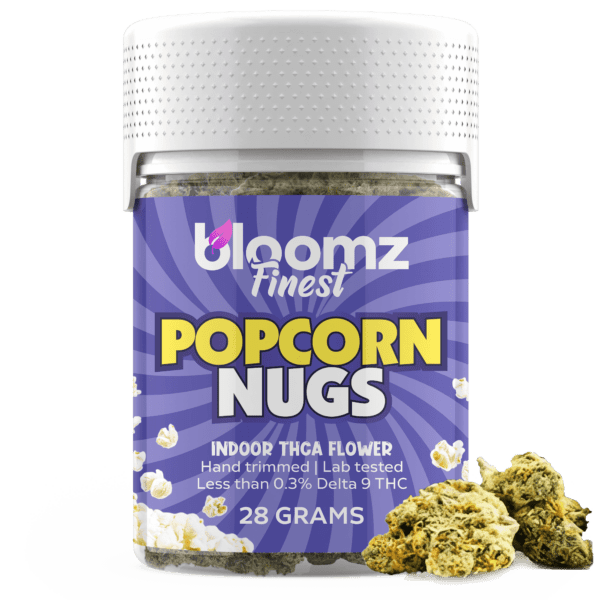In the intricate tapestry of consciousness exploration, humanity has long sought pathways to altered perception, sometimes for simple joy, sometimes for profound insight. The modern landscape, rich with both ancient wisdom and scientific innovation, presents a fascinating array of options for those curious about what lies beyond ordinary experience. Emerging from one corner is HHC flower, a testament to controlled botanical enhancement, offering a potent and familiar ride into states of blissful relaxation. It speaks to a desire for a nuanced, manageable, yet powerful journey.
From another, deeper corner, often shrouded in historical reverence and natural mystery, come what are affectionately known as magic mushrooms, their unassuming forms holding the key to vibrant, expansive, and deeply introspective psychedelic voyages. This is not simply a comparison of two recreational substances; it is an exploration of two fundamentally distinct blueprints for shifting perception—one a carefully engineered botanical experience, the other a wild, natural key to unlocking the mind’s inner cosmos.
To Buy HHC Flower Click Here
Recommended products
Why It’s Important to Breakdown the Matchup of HHC Flower vs. Magic Mushrooms
In an increasingly diverse and accessible marketplace of consciousness-altering substances, the importance of clear, accurate, and deeply nuanced information cannot be overstated. The direct comparison of HHC flower and “magic mushrooms” is not merely academic; it is absolutely crucial for informed decision-making and, more importantly, for safety. These two substances, while both capable of altering perception, operate on entirely different pharmacological principles, possess vastly different legal statuses, and offer experiences that are worlds apart in intensity and character. To conflate them, or to approach one with the expectations suitable for the other, would be a significant misstep, potentially leading to discomfort, distress, or legal complications.
The fundamental reason for this comparison lies in their vastly divergent effects and mechanisms of action. HHC flower, as a cannabinoid product, interacts with the body’s endocannabinoid system, primarily producing a potent, smooth, and gently euphoric psychoactive experience akin to a classic cannabis high. The journey is often described as manageable, chilled, and relatively predictable. Magic mushrooms, conversely, contain psilocybin and psilocin, which are classic serotonergic psychedelics.
They induce profound alterations in perception, thought patterns, and emotions, often leading to vivid visual experiences, deep introspection, shifts in one’s sense of self, and sometimes intense emotional catharsis. These are not merely stronger versions of HHC; they are qualitatively different experiences, demanding a completely distinct set of preparations, expectations, and personal readiness.
Furthermore, their legal standing is a critical point of divergence that consumers must fully grasp. HHC flower operates in a contentious legal gray area, its legality derived from the 2018 Farm Bill but often challenged and banned at the state level. While widely available, its status is precarious and subject to change. Magic mushrooms, however, remain classified as Schedule I controlled substances at the federal level in the United States, meaning they are explicitly illegal to possess, cultivate, or distribute under federal law. Despite some local decriminalization efforts, their overarching illegality carries significant risks. Understanding this difference is not just about legality; it’s about making choices that align with one’s personal comfort with legal risk.
Finally, a deep dive into this matchup allows us to appreciate the different contexts and intentions typically associated with each substance. HHC flower is often sought for recreational relaxation, social enhancement, or mild creative stimulation, fitting comfortably into a casual setting. Magic mushrooms, with their capacity for profound and sometimes challenging experiences, are more frequently approached with an intention for introspection, personal growth, spiritual exploration, or even therapeutic potential (though this is still largely in a research context). By clearly delineating these distinct paths, individuals can make choices that truly resonate with their personal goals, ensuring they select the right tool for the desired journey into altered states of consciousness.
Contender #1: HHC Flower
In the ever-expanding galaxy of hemp-derived cannabinoids, HHC flower has secured its place as a bright and dependable star, celebrated by users for its remarkable stability and its strikingly familiar effects. It has become a cornerstone of the alternative cannabis market, offering a unique and compelling option for those who seek the classic sensations of a THC high in a format that is, in many places, more legally accessible. From a distance, a jar of HHC flower is indistinguishable from top-shelf marijuana, showcasing vibrant green and purple hues, a frosty coating of what appears to be trichomes, and the pungent, inviting aromas of its parent strains.
This resemblance is intentional, as HHC flower begins its life as premium hemp, but its final, psychoactive character is the result of a sophisticated, multi-step laboratory process. It is a product that beautifully marries the agricultural art of hemp cultivation with the precise science of chemical hydrogenation, creating a reliable and enjoyable journey for the modern cannabinoid enthusiast.
At the core of this popular product is the molecule Hexahydrocannabinol, or HHC. While it has recently exploded in popularity, HHC is not a new discovery, as it was first synthesized in the 1940s by the legendary American chemist Roger Adams, who was a pioneer in cannabis research. HHC is typically created through a process called hydrogenation, which fundamentally alters the chemical structure of a THC molecule. In simple terms, this process involves adding hydrogen atoms to a THC molecule (often Delta 9 THC derived from a cannabis extract) in the presence of a metal catalyst like palladium or nickel. This chemical reaction breaks one of the THC molecule’s double bonds in its top ring structure, replacing it with hydrogen atoms. The result is a “hydrogenated” cannabinoid that is incredibly stable. This increased stability means HHC is much more resistant to degradation from heat, UV light, and oxygen, giving it a significantly longer shelf life than its THC cousins. It is this unique, durable structure that also gives HHC its distinct and reliable effects.
With this crucial scientific context, it becomes clear that “HHC flower” isn’t a strain of cannabis that a farmer can cultivate to be naturally rich in HHC but instead, it’s a manufactured, composite, and infused product. The process begins with high-quality, legally grown hemp flower, which is naturally rich in CBD (cannabidiol) and contains less than 0.3% Delta 9 THC. This beautiful, terpene-rich flower provides the physical structure, the aromatic compounds that create the flavor and smell, and a host of other minor cannabinoids. This foundational hemp flower then serves as the base which is meticulously infused or coated with a pure HHC distillate, the potent, honey-like oil created through the hydrogenation process.
This infusion process is what elevates the simple, non-intoxicating hemp flower into a potent, psychoactive product, delivering the unique and sought-after effects of HHC in a familiar, smokeable format. The quality and safety of the final product are therefore entirely dependent on two separate but equally important factors: the premium quality of the initial hemp flower and the verified purity of the HHC distillate with which it is infused.
Recommended products
The creation of a high-quality and effective HHC flower is a multi-stage process that requires a perfect marriage of expert agricultural practices and precise, high-level laboratory techniques. Each and every step in this complex chain of production is critically important to producing a final product that is safe, potent, consistent, and enjoyable for the end consumer:
Cultivation of Premium Hemp Flower: The journey begins on the farm, where expert cultivators grow high-grade CBD or CBG hemp. These plants are selected for their desirable characteristics—large, dense buds, a rich profile of aromatic terpenes, and a beautiful visual appearance. After being harvested at peak maturity, the flower is carefully dried and cured to optimize its flavor and preserve its natural compounds.
Synthesis of HHC Distillate: In a specialized laboratory, a cannabinoid-rich extract is sourced, often from legal hemp. This extract undergoes the hydrogenation process. It is placed in a pressurized container with a catalyst and exposed to hydrogen gas, which chemically saturates the cannabinoid molecules to create HHC. The resulting crude oil is then meticulously refined and distilled to create a pure, potent, and clean HHC distillate, which is the active ingredient.
Infusion of Flower: The clear, viscous HHC distillate is then carefully applied to the cured hemp flower. To ensure an even and consistent product, manufacturers may use several techniques. A common method is to lightly heat the distillate to make it less viscous and then spray it evenly over the buds while they are being tumbled. Other, more advanced methods involve a solventless “cryo-infusion” process that helps the distillate bind more thoroughly to the flower’s surface.
Crucial Third-Party Lab Testing: This final step is essential for consumer safety and transparency. A reputable manufacturer will send a sample of the finished, infused HHC flower to an independent laboratory for a full panel of tests. This analysis verifies the potency of HHC and other cannabinoids and, critically, screens for any residual heavy metals (like the catalysts used in hydrogenation) or solvents, ensuring the product is clean, safe, and accurately labeled.
The HHC flower market offers a robust selection of product types and categories, primarily differentiated by the quality of the base hemp flower and the specific application process used. This variety allows consumers to choose an option that best fits their personal preferences for flavor, potency, and convenience. From connoisseur-grade indoor buds to easy-to-use pre-rolls, the market has evolved to cater to a wide range of experienced users seeking the unique and reliable effects of this stable cannabinoid:
Indoor HHC Flower: This is the top-shelf category of HHC flower. The process begins with premium, indoor-grown CBD or CBG hemp, which is prized for its flawless appearance, dense structure, and extremely rich terpene content. When this high-quality flower is infused with HHC distillate, it creates a product that offers the best of both worlds: the potent, balanced high of HHC and the complex, delicious flavors and aromas of a connoisseur-grade cannabis strain.
Outdoor HHC Flower: This more budget-friendly option uses hemp flower that has been cultivated outdoors in natural sunlight. While outdoor buds may be less perfectly manicured and slightly less potent in terpenes than their indoor counterparts, they provide an excellent and effective base for the HHC infusion. This category offers a great value for consumers who are more focused on the effects of the HHC itself than on the aesthetic nuances of the flower.
HHC Small Buds: Often called “popcorn” buds, HHC smalls are smaller nuggets of the same high-quality indoor or outdoor flower. They are separated from the larger, premium colas during the trimming and sorting process and are sold at a lower price point due to their size. HHC smalls are a fantastic option for those looking to enjoy the full experience of HHC flower in a more economical fashion.
HHC Moonrocks: For those seeking a truly powerful and concentrated experience, HHC Moonrocks are the ultimate choice. They are created by taking a high-quality hemp nug, dipping it in a sticky layer of potent HHC distillate, and then rolling the entire bud in a generous coating of CBD or CBG kief. This triple-layered product is incredibly potent and delivers a slow-burning, long-lasting, and intensely blissful experience.
HHC Pre-Rolls, Blunts & Joints: Offering the pinnacle of convenience, HHC pre-rolls are ready-to-use smokable products. They consist of ground HHC flower carefully packed into rolling papers (joints) or hemp wraps (blunts), often with a crutch or filter included. Pre-rolls eliminate all the work of grinding and rolling, providing a simple, portable, and shareable option for enjoying HHC.
The use of specific strain names in the context of HHC flower is an important concept for consumers to understand. When you purchase an “Indica,” “Sativa,” or “Hybrid” HHC flower, the strain designation refers to the genetic makeup and, more importantly, the terpene profile of the base hemp flower that was used before the HHC distillate was applied. The final experience is a beautiful synergy: the distinct mood and flavor notes of the original hemp strain are layered with the consistent, core psychoactive effects of the HHC. The terpenes act as the “guide,” steering the reliable HHC high in a more relaxing or more energizing direction:
Indica: When an Indica-dominant hemp strain, known for its characteristically calming and soothing terpenes like myrcene or linalool, is infused with HHC, the result is a profoundly relaxing experience. The balanced, euphoric high of the HHC is guided by the Indica terpenes towards a state of deep physical comfort and mental tranquility. This makes Indica HHC Flower an ideal choice for evening use, unwinding from a stressful day, or simply melting into a state of blissful repose.
Sativa: A Sativa-dominant hemp strain, typically rich in uplifting and zesty terpenes like limonene or pinene, provides the foundation for an energizing HHC experience. The smooth, clear-headed buzz from the HHC is complemented and amplified by the stimulating effects of the Sativa profile. This combination is perfect for daytime activities, creative projects, social gatherings, or any situation where a user wants to feel euphoric, uplifted, and engaged.
Hybrid: Hybrid hemp strains, which contain a balanced mix of Indica and Sativa genetics, offer the most versatile HHC flower experience. When infused with HHC, these strains can provide a “best of both worlds” effect: a pleasant cerebral uplift that sparks creativity and conversation, paired with a comfortable body sensation that keeps you relaxed but not sedated. The nuanced effects of a Hybrid HHC flower make it a suitable and adaptable choice for almost any occasion.
The legality of HHC flower in the United States exists in the same complex, gray territory as many other hemp-derived cannabinoids like Delta 8 THC. Its legal basis is rooted in the 2018 Farm Bill, which legalized hemp and its derivatives, provided they contain less than 0.3% Delta 9 THC. Since HHC is not Delta 9 THC and can be produced from legal hemp-derived CBD, the industry operates under the premise that it is a federally permissible hemp product.
However, this stance is not without its challenges. Some legal interpretations argue that because HHC is created through a chemical process (hydrogenation), it could be considered a “synthetically derived” tetrahydrocannabinol, which could put it at odds with the DEA’s rules. In response to this ambiguity, several states have passed their own laws that specifically ban or regulate HHC and other intoxicating cannabinoids. Therefore, while HHC is available in many states, its legal status is not uniform across the country and remains subject to change.
Recommended products
The purposes for using HHC flower are centered on achieving a pleasant, potent, and reliable psychoactive experience that closely mirrors that of traditional Delta 9 THC. The primary consumption methods all involve heating the flower to vaporize the infused HHC distillate and the natural compounds of the base hemp, allowing for rapid absorption through inhalation. The choice of method largely comes down to user preference for the ritual, flavor, and overall experience, with each offering a slightly different nuance:
Vaping (using a portable or desktop vaporizer): Vaping has become a preferred method for many connoisseurs as it heats the HHC flower to a precise temperature below the point of combustion. This releases a clean, smooth vapor that is rich in the flavors of the base hemp flower’s terpenes and the HHC distillate. Vaping is often considered a more efficient and flavorful way to experience the flower’s full profile without the harshness of smoke.
Smoking: This is the most traditional and direct method of consumption. By combusting the HHC flower in a pipe, bong, joint, or blunt, the user inhales the smoke, leading to a very rapid onset of effects, typically within minutes. The ritual of smoking is cherished by many, and it provides a robust and powerful experience that ensures all the active compounds are vaporized instantly.
Cooking/Baking: HHC flower can be used to create homemade edibles. The HHC distillate used to infuse the flower is already psychoactive, so technically, no decarboxylation is needed to activate it. However, the base CBD or CBG hemp flower does require decarboxylation (heating in an oven at a low temperature) to activate its own cannabinoids. By decarbing the flower before infusing it into butter or oil, users can create edibles that deliver the effects of both the HHC and the full spectrum of cannabinoids from the base hemp, resulting in a potent, long-lasting, full-body experience.
The overall effects of HHC flower are what have made it a standout in the crowded cannabinoid market. It is widely reported by users to be remarkably similar to Delta 9 THC, with a potency that is generally considered to be somewhere between the milder Delta 8 THC and the more powerful Delta 9 THC. The high is often described as well-balanced, providing a delightful mix of cerebral uplift and physical relaxation. Many users find the HHC experience to be exceptionally smooth and less likely to induce the feelings of anxiousness or paranoia that can sometimes be associated with high doses of Delta 9 THC. The mental state is often characterized as euphoric, happy, and clear, while the body feels a warm, soothing buzz. This combination makes HHC a versatile cannabinoid, capable of providing a chilled-out, relaxing experience or a more giggly, creative, and social one, depending on the strain and setting.
Pros & Cons
HHC flower, with its unique chemical properties and market position, presents a compelling set of advantages alongside some important considerations. Its profile as a manufactured, yet highly effective, cannabinoid product creates a distinct list of pros and cons that potential users should carefully weigh to determine if it aligns with their preferences and priorities.
Pros:
Effects are Very Similar to Delta 9 THC: The most significant pro for many users is that HHC delivers a psychoactive experience that is remarkably close to the classic, sought-after high of traditional cannabis. It provides a familiar and satisfying journey of euphoria and relaxation.
Enhanced Chemical Stability: The hydrogenation process makes the HHC molecule incredibly stable and resistant to degradation from heat, UV light, and oxidation. This gives HHC products a much longer shelf life than THC products, ensuring they retain their potency over time.
A Balanced and Smooth High: Many users report that the HHC high is smoother and more relaxing than that of Delta 9 THC, with a lower likelihood of inducing anxious or paranoid feelings. This makes it a preferred choice for those who are sensitive to the sometimes-edgy side effects of traditional THC.
Legal Accessibility in Many Regions: Thanks to its derivation from legal hemp, HHC flower can be legally purchased in many states where Delta 9 THC is not. This provides a legal pathway for a potent and authentic cannabis-like experience in those areas.
Potent and Satisfying Experience: HHC is notably more potent than Delta 8 THC, offering a robust and substantial high that will satisfy even experienced cannabis users. It provides a significant and enjoyable psychoactive effect that is both potent and well-balanced.
Synergistic Terpene and Cannabinoid Effects: HHC flower combines the unique effects of the HHC molecule with the rich cannabinoid and terpene profile of the base hemp flower. This allows for a nuanced and full-bodied experience where users can enjoy the qualities of their favorite strains.
Wide Variety of Product Choices: The HHC market is well-developed, offering a broad selection of infused flower products. From premium indoor strains to convenient pre-rolls and potent moonrocks, there is an HHC flower product to suit nearly every preference.
Rapid Onset When Inhaled: When smoked or vaped, HHC flower provides a very fast onset of effects, allowing users to quickly gauge their state and dose accordingly. This immediate feedback makes it easy to find the perfect level for the desired experience.
Flavorful and Aromatic: Because HHC flower is made with high-quality, terpene-rich hemp, it can offer an incredibly flavorful and aromatic experience. Users can enjoy the complex notes of pine, citrus, berry, or diesel from their favorite strains.
Potential to Avoid Drug Test Detection (Anecdotal): There is a widely circulated, though scientifically unproven, anecdotal claim that HHC may not be metabolized in the same way as THC and thus might not show up on standard drug panels. However, this is highly unreliable and should not be trusted; users should always assume they will fail a drug test.
Cons:
Contentious and Ambiguous Legal Status: Like other popular hemp-derived cannabinoids, the legality of HHC is a subject of intense debate and varies by state. It exists in a legal gray area that is subject to changing regulations and outright bans in some jurisdictions.
Lack of Regulation and Safety Concerns: The market for HHC is largely unregulated, which can lead to a significant variance in product quality. The hydrogenation process, if not performed and purged correctly by a reputable lab, could potentially leave behind residual heavy metal catalysts, posing a safety risk.
It Is a Manufactured Product: For cannabis purists who value the natural, unaltered state of the plant, the fact that HHC flower is a manufactured product made by coating hemp with a synthesized distillate is a significant drawback.
Limited Long-Term Research: While HHC was discovered decades ago, it has only recently become a popular consumer product. As such, there is a lack of comprehensive, long-term scientific research on its effects and safety profile in humans compared to more well-studied cannabinoids like Delta 9 THC.
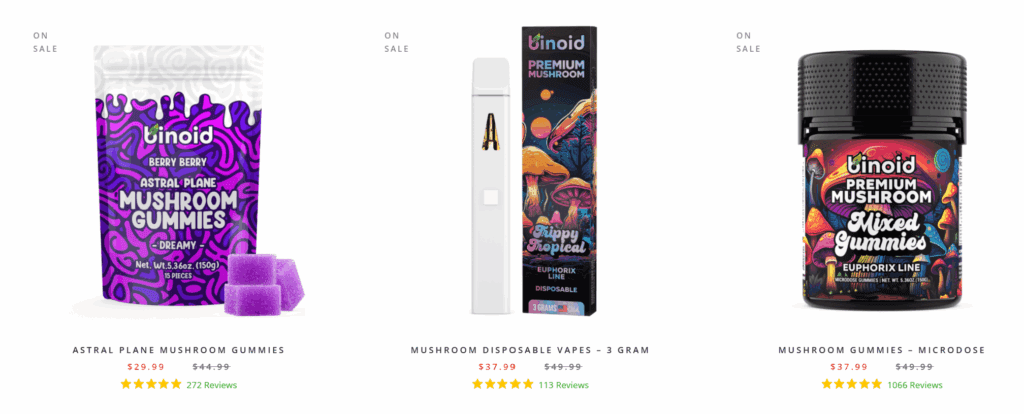
Contender #2: Magic Mushrooms
Emerging from the earth, often in the most unassuming and humble of forms, “magic mushrooms“—primarily species from the Psilocybe genus—are fungi that have held a profound and revered grip on human consciousness for millennia. Far from being a mere recreational curiosity, these organisms have been venerated as sacred entheogens (substances that “generate the divine within”), spiritual guides, and powerful keys to unlocking the hidden dimensions of the mind across diverse cultures and throughout the annals of human history.
Their modest appearance, often just small, brown fungi, stands in stark contrast to the immense and vibrant inner cosmos they are capable of revealing. Their story is one intertwined with ancient shamanism, modern scientific inquiry, and a global reawakening to their potential for profound personal exploration, insight, and a fundamental re-framing of one’s perception of self and the universe. They are not simply about “seeing things”; they represent a pathway to experiencing reality in a profoundly different way.
The term “magic mushrooms” refers to a polyphyletic group of fungi that contain psilocybin and psilocin. Psilocybin is the primary psychoactive compound, but it is actually a prodrug. Once ingested, the body metabolizes psilocybin into psilocin, which is the compound directly responsible for the profound psychedelic effects. Psilocin primarily acts as a partial agonist at serotonin 5-HT2A receptors in the brain. This interaction is believed to lead to a significant increase in functional connectivity across brain networks that are normally quite segregated, effectively allowing different parts of the brain to communicate more freely.
This widespread communication is thought to be the basis for many of the characteristic psychedelic effects, such including intensified emotions, vivid sensory distortions, synesthesia (mixing of senses), and a powerful sense of unity or spiritual connection. Unlike cannabis, which modulates existing brain functions, psilocin acts more like a reset button, temporarily disrupting established patterns of thought and perception.
The history of “magic mushrooms” is as rich and ancient as human civilization itself, stretching back thousands of years and spanning continents. Archaeological evidence, such as mushroom iconography found in ancient rock art in the Sahara Desert dating back 7,000 to 9,000 years, suggests their use in spiritual and ceremonial contexts is deeply prehistoric. Cultures in Mesoamerica, particularly the Aztec and Mayan civilizations, revered psilocybin-containing mushrooms, which they called “teonanácatl” (flesh of the gods). These mushrooms were integral to their religious rituals, divination, and healing practices, believed to facilitate communication with deities and provide profound insights.
Their use was documented by Spanish chroniclers in the 16th century, though subsequently suppressed by the conquering Europeans. In modern history, the Western world was largely reintroduced to “magic mushrooms” in the 1950s through the work of mycologist R. Gordon Wasson, who documented his experience with psilocybin mushrooms among the Mazatec people of Oaxaca, Mexico, and brought the story to Life magazine. This marked the beginning of modern scientific and cultural interest, leading to a period of intense research in the 1960s, followed by prohibition, and now a resurgence of scientific and public interest in the 21st century.
The ways in which magic mushrooms can be consumed have evolved beyond simply eating dried caps, reflecting both a desire for convenience and attempts to mask their often earthy or bitter taste. While the raw or dried form remains the most traditional, modern ingenuity has led to the development of various product types, particularly in regions where decriminalization or legal frameworks are emerging. These products aim to offer a more palatable and sometimes more precisely dosed experience, making the profound effects of psilocybin accessible to a broader audience while still demanding the same respect for their inherent power:
Powder: Dried magic mushrooms can be ground into a fine powder. This form is particularly versatile, as it can be easily encapsulated, mixed into beverages (like “lemon tek” for faster onset), or incorporated into food items. Grinding the mushrooms helps to create a more homogeneous product, which can lead to more consistent dosing compared to eating whole, variably sized pieces. However, the strong taste can still be noticeable when mixed into liquids or certain foods.
Edibles: This is one of the most popular modern forms, especially where magic mushrooms are decriminalized or legally available. Manufacturers extract the psilocybin and psilocin and infuse them into various edible products like gummies, chocolates, or other confections. These edibles not only completely mask the mushroom’s taste but also offer the significant advantage of precise, pre-measured dosing, making the experience more predictable and approachable for users who might be intimidated by whole mushrooms.
Disposable Vapes: This is a very new and still highly experimental category, with limited scientific research. Some products claim to contain synthetic psilocin or other psychoactive compounds extracted from mushrooms that can be vaporized. However, the efficacy, safety, and long-term effects of inhaling these compounds are largely unknown, and this method is not widely recognized or supported by the established psychedelic community. Extreme caution is warranted, and this is generally not a recommended method of consumption.
Tinctures: Tinctures involve extracting the active compounds of magic mushrooms into a liquid, typically alcohol. These concentrated liquids are then administered sublingually (under the tongue) using a dropper, allowing for relatively rapid absorption into the bloodstream. Tinctures offer a high degree of dosage control and can be a more discreet method of consumption, though the taste can still be strong for some users.
Capsules: For those who prioritize discretion and taste-free consumption, capsules are an ideal choice. They contain precisely measured amounts of dried, ground mushroom powder or an extracted psilocybin/psilocin compound. Capsules offer the ultimate convenience and ensure consistent dosing without any of the mushroom’s natural flavor, making them popular for micro-dosing or for those who simply prefer a straightforward method of ingestion.
The concept of combining “magic mushrooms” with cannabinoids and even live terpenes is an emerging area of interest for those seeking to fine-tune the psychedelic experience. While the core effects of psilocybin are profound on their own, other compounds can potentially modulate the journey. For instance, some users might combine psilocybin with CBD, hoping that the non-intoxicating cannabinoid could help to ground the experience, smooth out potential feelings of overwhelm, or contribute to a sense of calm during the introspective process.
The addition of Delta 8 THC might be considered by those looking to introduce a gentler, more relaxing body sensation or a mild layer of euphoria to complement the mental aspects of the psilocybin. Live terpenes, extracted from cannabis or other aromatic plants, could theoretically be introduced not only for flavor but also to potentially steer the mood or “vibe” of the trip through their own aromatic and subtle physiological effects, leveraging the concept of the entourage effect, although rigorous scientific study on these specific combinations is still in its nascent stages.
The current legality of “magic mushrooms” in the United States stands in stark contrast to that of THCA flower. Federally, psilocybin and psilocin are classified as Schedule I controlled substances under the Controlled Substances Act. This means they are deemed to have a high potential for abuse and no currently accepted medical use, making their cultivation, possession, and sale illegal nationwide. However, the legal landscape is slowly but significantly shifting. Several cities, including Denver, Oakland, Santa Cruz, and Ann Arbor, have decriminalized psilocybin, making its possession the lowest law enforcement priority.
Furthermore, the state of Oregon has legalized psilocybin for supervised therapeutic use within a regulated framework, and Colorado has followed suit. Other states are exploring similar paths, moving towards decriminalization or controlled medical access. Despite these progressive local and state-level changes, the federal prohibition remains firmly in place, creating a complex and evolving legal environment where federal and local laws can be in direct conflict, making understanding one’s specific local jurisdiction absolutely critical.
The overall effects of magic mushrooms are profoundly psychedelic, offering a vastly different and more immersive kind of altered state compared to the relatively lucid high of Delta 8 THC flower. The experience, or “trip,” typically begins within 30-60 minutes of ingestion and unfolds over 4 to 8 hours, often in distinct phases. The initial “come-up” can be characterized by physical sensations, sometimes including nausea or a “body load,” as perception begins to shift. At the “peak,” the user is fully immersed in the psychedelic state, which is marked by a significant alteration of sensory input. Colors may appear more brilliant, surfaces may seem to breathe or flow, and intricate geometric patterns can manifest, especially with closed eyes.
The user’s internal landscape is equally transformed; thought processes become more fluid and associative, often leading to profound and unexpected insights. Emotions are amplified, and a user may experience everything from overwhelming bliss and awe to deep introspection and the processing of difficult memories. A hallmark of a strong experience is “ego dissolution,” a temporary loss of the sense of a separate self, leading to a powerful feeling of being interconnected with everything. The entire journey is deeply subjective and profoundly influenced by one’s mindset (“set”) and physical environment (“setting”), making preparation and intention key components of the experience.
Pros & Cons
Delving into the world of magic mushrooms reveals a complex interplay of potential benefits and significant challenges. Their profound effects, ancient history, and contentious legal status create a unique profile that demands careful consideration. Weighing these pros and cons is essential for anyone contemplating an encounter with these powerful fungi, ensuring a journey undertaken with deep respect and thorough understanding.
Pros:
Profound Psychedelic Experiences: For individuals seeking deep introspection, spiritual exploration, or profound shifts in perspective, magic mushrooms offer a uniquely powerful psychedelic journey. They can facilitate intense emotional releases, vivid visual and auditory alterations, and a profound sense of interconnectedness, often leading to what users describe as life-changing insights.
Potential for Deep Personal Exploration: Unlike the more recreational effects of Delta 8 THC, magic mushrooms are often approached with an intention for serious self-exploration. Their capacity to temporarily dissolve ego boundaries and alter habitual thought patterns can provide individuals with a fresh perspective on their lives, relationships, and place in the world, fostering a sense of wonder.
Rich Historical and Cultural Significance: Engaging with magic mushrooms connects one to an unbroken lineage of human interaction with these fungi, stretching back millennia. Their use in ancient shamanic and spiritual practices across various cultures imbues them with a deep historical weight and cultural reverence, making the experience feel part of a timeless tradition.
Natural Origin: For those who prioritize natural substances, magic mushrooms are a product of the earth, growing organically without the need for lab-based conversions or infusions. This natural purity is appealing to users who seek an unadulterated botanical experience, untainted by industrial processes.
Long-Lasting Effects: The effects of magic mushrooms typically last for several hours, providing an extended period for introspection and exploration. This longer duration allows for a more immersive experience compared to the shorter-acting effects of many inhaled cannabis products, which can be advantageous for intentional, structured sessions.
Unique Alteration of Perception: Magic mushrooms create a distinct altered state of consciousness that is qualitatively different from the effects of cannabinoids. They engage different neural pathways, leading to a unique sensory and cognitive experience that can be highly novel and stimulating for those seeking new forms of perception beyond the familiar.
Growing Decriminalization Movement: While federally illegal, a burgeoning movement for decriminalization and regulated access for therapeutic use is gaining traction in various cities and states. This evolving landscape reflects a growing societal recognition of their potential value and may offer more pathways for legal engagement in the future, providing a glimmer of hope for broader access.
Cons:
Federal Illegality: The most significant and immediate drawback is the federal Schedule I classification of psilocybin and psilocin. This means that possession, cultivation, and sale are illegal under federal law, carrying substantial legal risks including fines and imprisonment, despite some local decriminalization efforts.
Intense and Potentially Overwhelming Experience: Magic mushrooms can induce profoundly intense and sometimes challenging experiences. While often insightful, these can include periods of anxiety, confusion, or fear, particularly at higher doses or in uncontrolled environments. The intensity can be overwhelming for some, leading to what is commonly referred to as a “difficult trip.”
Unpredictable Dosage and Potency: The potency of magic mushrooms can vary significantly from strain to strain, batch to batch, and even within different parts of the same mushroom. This inherent variability makes accurate dosing difficult, especially when consuming raw or unprocessed mushrooms, increasing the risk of an unintendedly intense experience.
Risk of Misidentification: In nature, many species of wild mushrooms are deadly poisonous. Misidentifying a magic mushroom for a toxic one can have fatal consequences. This inherent risk makes foraging for magic mushrooms extremely dangerous for untrained individuals and underscores the importance of sourcing from trusted, knowledgeable channels, though this itself carries legal risk.
How to Go About Choosing Which Option
The choice between HHC flower and magic mushrooms is a decision that requires a clear understanding of your own intentions and expectations. These two substances are not interchangeable; they offer profoundly different journeys that originate from opposite ends of the experiential spectrum. One is a product of modern cannabinoid science, offering a potent version of a familiar psychoactive high, while the other is an ancient fungal key that unlocks a deeply introspective and reality-altering psychedelic state. The right option is not the one that is objectively “better,” but the one that aligns with the specific type of experience you are seeking, your comfort with different states of consciousness, and your tolerance for legal ambiguity versus outright illegality.
The first and most critical consideration is the desired state of mind. If you are looking for a potent, euphoric buzz that enhances relaxation, social interaction, or creative pursuits without being overwhelmingly psychedelic, HHC flower is the logical choice. Its effects are relatively predictable, falling within the known spectrum of cannabinoid experiences, and are often described as a smooth and manageable, yet powerful, high. On the other hand, if your curiosity leans toward the mysterious, the deeply introspective, and the visually spectacular, magic mushrooms offer a path into a completely different realm. Their psychedelic effects are geared more toward solitary or small-group exploration, meditation, or the pursuit of profound personal and spiritual insights—a far cry from the easy-going, social nature of an HHC session.
Next, you must assess the legal landscape and your personal risk tolerance. HHC flower exists in a highly contentious legal gray area; while accessible online in some places, it is explicitly banned in many states, and its federal status is debated. This carries a legal risk that consumers must be aware of. Magic mushrooms, being federally illegal as a Schedule I substance, offer a much more severe legal risk in most of the country, despite local decriminalization efforts. Your choice may depend on whether you are more comfortable navigating a complex and shifting legal environment or the more black-and-white (though severe) risks of a federally prohibited substance.
Finally, think about the context and your experience level. HHC flower, while potent, is more forgiving and predictable than a classic psychedelic, making it more accessible to a wider range of experienced adult users. Its effects are consistent with what one might expect from a strong cannabis product. Magic mushrooms, due to their unique and sometimes disorienting effects, require more preparation and are better suited for individuals who are experienced with altered states of consciousness and who are comfortable with surrendering a degree of control to the experience. The choice ultimately comes down to whether you want to powerfully steer a familiar vehicle or embark on a journey in a vessel that often steers itself.
|
Feature |
HHC Flower |
Magic Mushrooms (Psilocybin) |
|---|---|---|
|
Primary Compound |
Hexahydrocannabinol (HHC) |
Psilocybin / Psilocin |
|
Origin |
Manufactured (Hemp flower infused with lab-synthesized distillate) |
Natural (Fungi that produce psychoactive compounds) |
|
Experience Architecture |
Potent Psychoactive (A strong but smooth, classic “high”) |
Classic Psychedelic (Reality-altering, visual, introspective) |
|
Potency Level |
High |
Moderate to Extremely High (Variable by species and dose) |
|
Target User |
Experienced cannabis users. |
Experienced psychonauts or beginners with extreme caution and guidance. |
|
Federal Legal Status |
Contentious; derived from legal hemp but legality is debated by DEA. |
Illegal (Schedule I Controlled Substance) |
|
Primary Risks |
Legal ambiguity, unregulated market quality (residual catalysts). |
Federal legal penalties, overwhelming psychological experience, misidentification (if foraged). |
|
Predictability |
Relatively high and predictable. |
Variable; highly influenced by “set and setting.” |
The Polished Lens and The Open Door
In the final analysis, the choice between HHC Flower and magic mushrooms is a choice between two fundamentally different ways of seeing. HHC acts as a masterfully crafted and polished lens, one that you can place over your eyes to make the existing world feel warmer, more vibrant, more euphoric, and deeply relaxing—but it is still a lens, enhancing the world that is already there. Magic mushrooms are not a lens; they are a key to a door. They do not merely alter your view of the room you are in; they invite you to step through the doorway into a completely different room altogether, one constructed from the deepest materials of your own psyche.
The wisdom lies not in deciding which’s superior, but in knowing whether your intention is to enhance the view or to change the scenery entirely, and choosing your tool with the respect and preparation that such a profound choice deserves.
To Buy HHC Flower Click Here
Recommended products
-
THCA Flower – Mystery Reserve
$41.99$79.99 -
THCA Flower – Platinum Line
$49.99$79.99 -
THCA Flower – Indoor Exotics – Gold Line
$37.99$69.99 -
THCA Smalls
$149.99$256.99

